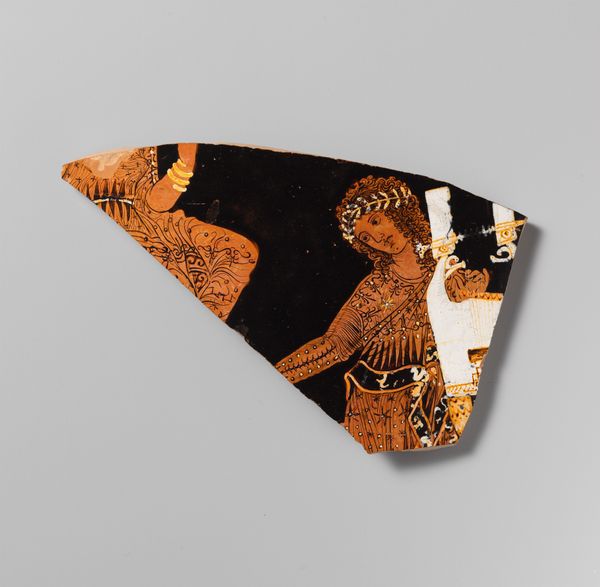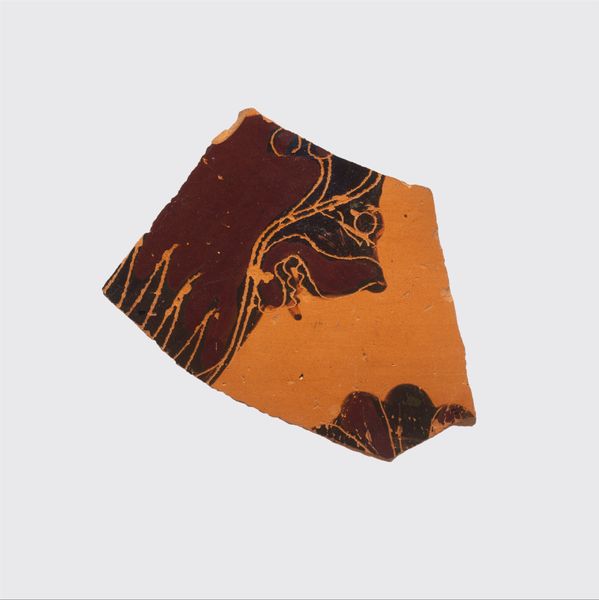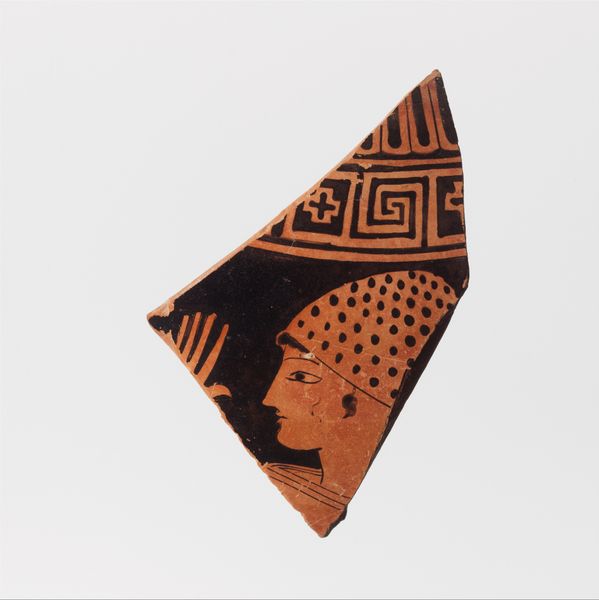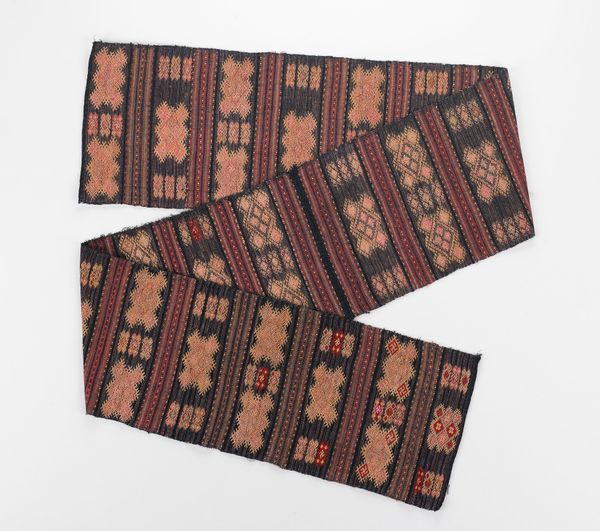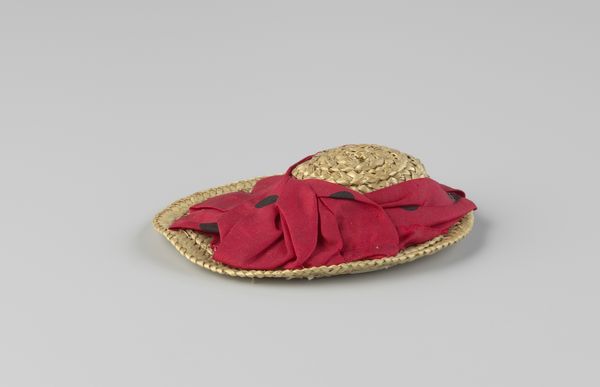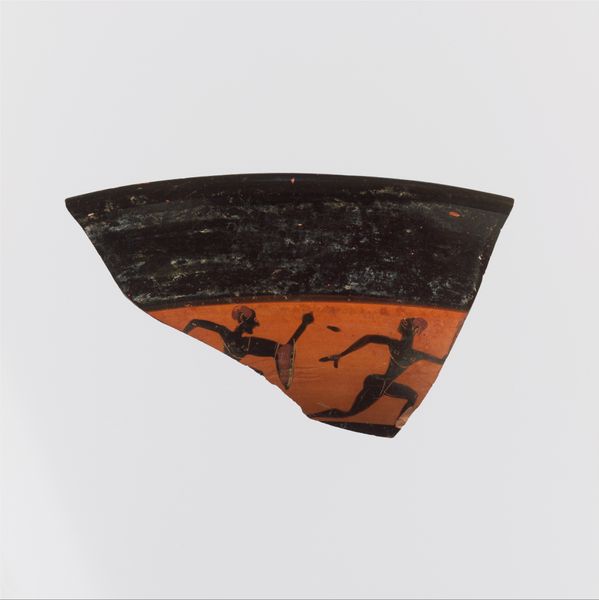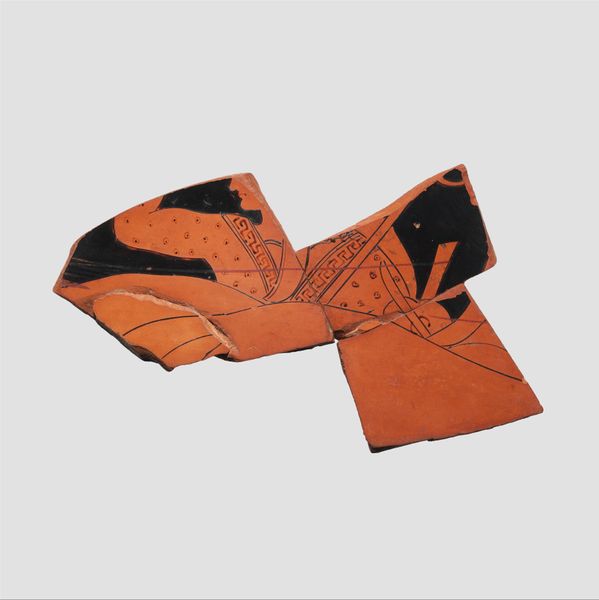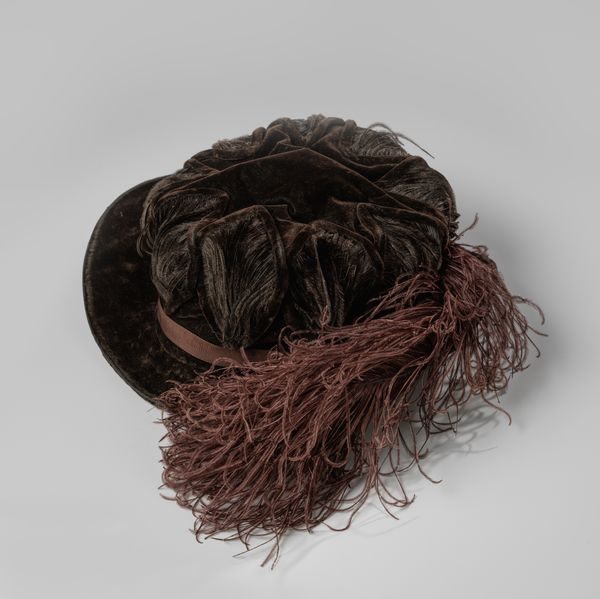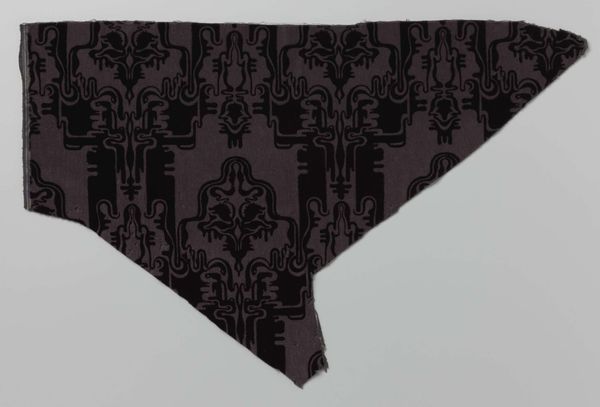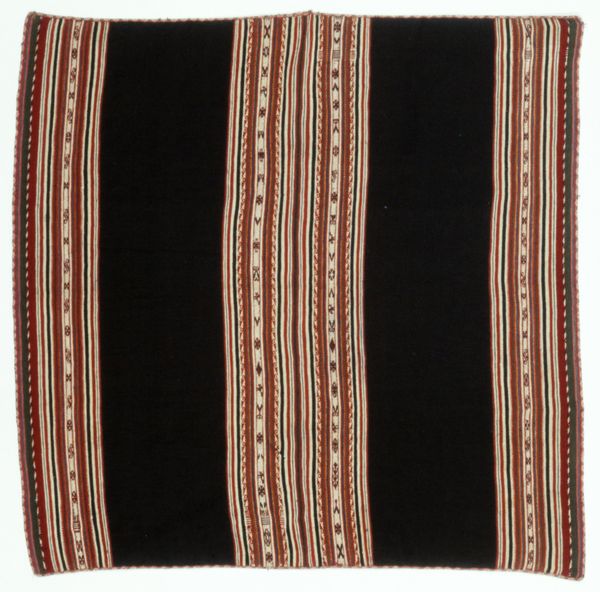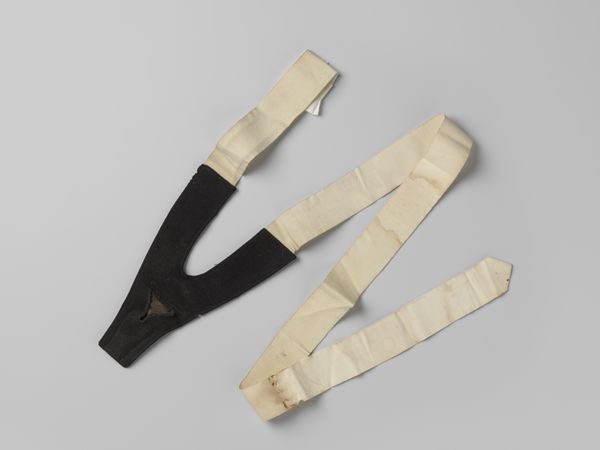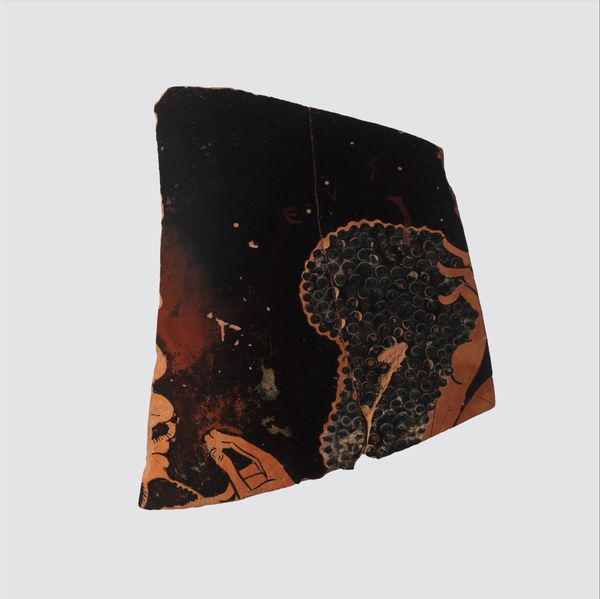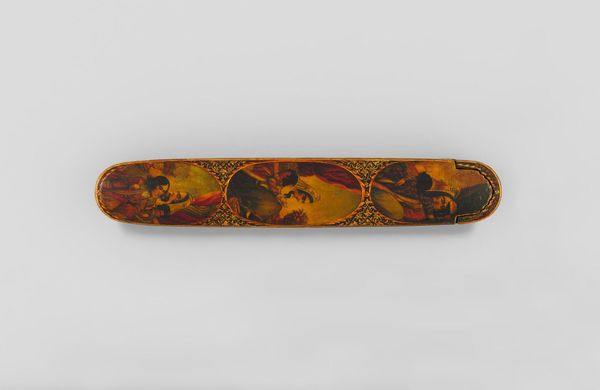
drawing, ceramic
#
drawing
#
greek-and-roman-art
#
ceramic
#
vase
#
figuration
#
roman-art
#
minimal pattern
#
organic pattern
#
ancient-mediterranean
#
arch
#
men
#
history-painting
Dimensions: 4 5/8 x 7 1/4in. (11.8 x 18.4cm) Other (greatest height): 4 5/8in. (11.8cm)
Copyright: Public Domain
Curator: This piece, a fragment of a hydria, dates back to approximately 540 BC. It resides here at the Metropolitan Museum of Art. Editor: Wow, it looks like something pulled straight out of an action comic! So dramatic, so fragmented. What’s happening in the image, and how big would the whole piece have been originally? Curator: Hydrias, primarily used for carrying water, often showcased intricate narrative scenes. Given its likely origin in ancient Greece, the men depicted—most with visible bows—were high class archers and fighters. Depictions such as this reflect a society that both values physical capabilities and memorializes the importance of their actions with carefully illustrated earthenware. Editor: It's almost dreamlike, this floating shard of a forgotten story. There’s such a visceral quality despite the obvious damage—like it’s pulsing with the energy of whatever scene it used to portray. Do you think that kind of artistic energy persists beyond utility or beauty? Is there a "charge," if you will, that it builds in its time? Curator: I would assert that artistic intention, in this case, the meticulous depiction of militaristic events, does build that so-called "charge." The figures rendered in black-figure technique aren’t just aesthetic choices, but convey deep symbolic and political weight representative of the era’s social hierarchies and belief systems. Further examination will bring insight to which stories were favored, and whether or not they represent the time accurately. Editor: Right, of course; black-figure painting—they painted the silhouettes and then scratched in details. This image of men on the apparent edge of combat—it kind of gives me the creeps, knowing this could very well be how daily life felt for someone thousands of years ago. Curator: It does offer a glimpse, doesn’t it? A piece of someone else's lived experience that survives still to our modern gaze. The broken edge reminds us that no story, no history, is ever fully complete. Editor: I like the touch of considering a piece like this. Leaves more room for imagination to bloom in that little time spent together!
Comments
No comments
Be the first to comment and join the conversation on the ultimate creative platform.
